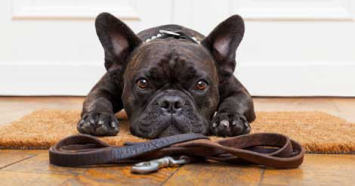
Training your puppy or newly-adopted dog is a vital part of his relationship with you. While teaching your dog, the two of you learn to communicate with each other. It’s a wonderful process. During training, there are some basic supplies you’ll need. While there are a variety of training methods and techniques, some of which require some specialized tools, these supplies are generally useful for most dogs and owners.
Leashes, Collars, and Harnesses
Think of the leash as an umbilical cord between the two of you. It can help your communication as well as prevent your dog from dashing away.
The leash can be any length that is comfortable for you, although four to six feet long leashes are most common. The material is also up to you; woven cotton or nylon, flat leather, braided leather, or nylon rope are frequently preferred.
What you fasten the leash to is also a personal preference; yours and your obedience instructor. Flat nylon buckle collars are popular with many dog owners, as are flat leather collars. Sometimes in class, trainers will recommend a martingale collar, which is much like a flat collar except it has a circle of chain or collar material where the leash fastens.
No-pull harnesses are also popular. These are designed to limit the dog’s ability to pull and are found in a variety of designs. If you are working with a trainer, ask her which design or brand she recommends.
No matter which collar or harness you decide to use, make sure it is fitted correctly, both to keep your dog safe and to make sure he doesn’t hurt himself. Training should never be harmful.
Treats, Motivators, and Clickers
In many dog training methods, treats serve a dual purpose. They are lures to help the dog perform an action and they are rewards for your dog’s cooperation.
Training treats need to be tasty, have a good smell (as the dog’s strongest sense is his sense of smell), and be small. A treat the size of a pencil eraser is perfect.
Sometimes, motivators other than treats are needed. Tennis balls or similar-sized balls work for many dogs. Fleece (soft) braided tug toys are great. Some dogs prefer squeaky toys. Try a few different things and see what’s exciting to your dog. These can then be used in your training program as both a lure and reward, just as you use treats.
A clicker helps fine tune your communication with your dog, allowing you to let him know as soon as he does something right. Some trainers and dog owners use their voice to say, “Yes!” or “Good!” when the dog is correct while others prefer to use the sound of the clicker. Your trainer can teach you how to use the clicker correctly.
Crates, Xpens, and Baby Gates
Crates, xpens (exercise pens or folding portable fencing), and baby gates are all used to restrict the dog’s freedom when he isn’t being supervised. A crate can keep him safe at night while a xpen set up in the family room can keep him close to the family in the evening. A baby gate across the hall is great for preventing him from doing too much exploring. By restricting the dog’s freedom, he is also prevented from learning bad habits, such as chasing the cat or raiding the trash can.
The puppy or newly-adopted dog should never spend all of his time in a crate or xpen. He needs time to run, play, cuddle, and learn the rules of his life. These are helpful training tools but need to be used correctly. Talk to your trainer for more clarification if you have some questions.
There Are More if You Need Them
You may wish to invest in a comfortable dog bed that you won’t mind having in the family room. By placing it on the floor near where people relax, you can teach your dog to go to this bed, this spot, and to chew on his toy or relax here. Some trainers recommend a mat or a small throw rug but a comfortable bed is more appealing to most dogs.
When you’re teaching your dog to come when you call him, a longer leash can help the process. A twenty or thirty feet long woven cotton or nylon leash is great.
There are many training supplies available to dog owners, but not all of them are necessary. Start with these basics and later, if you need some help, you can always add more.